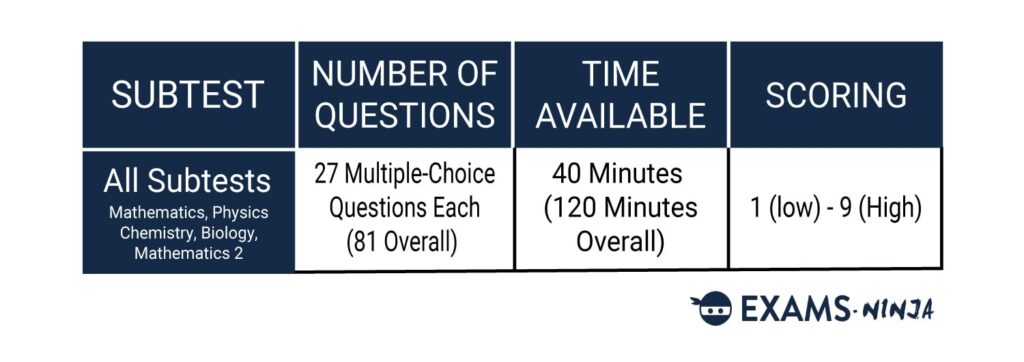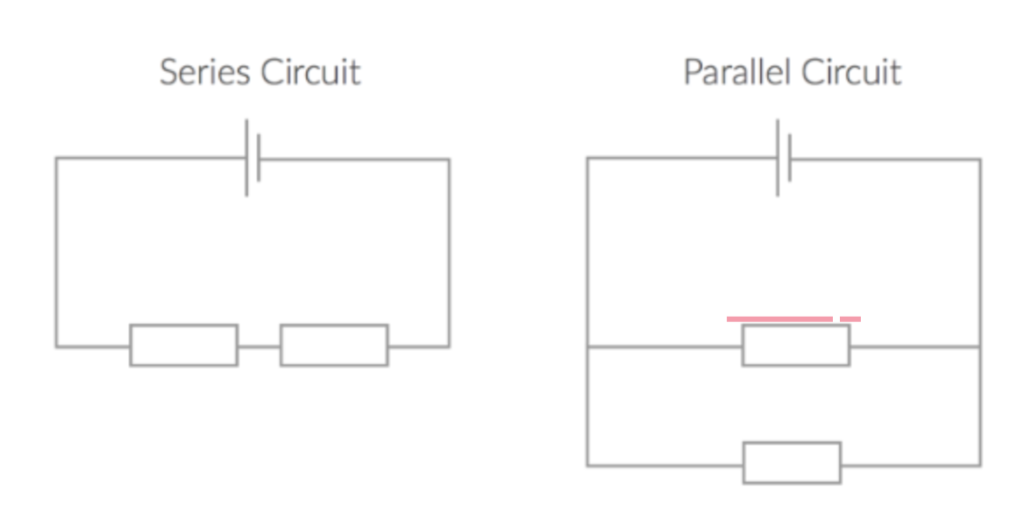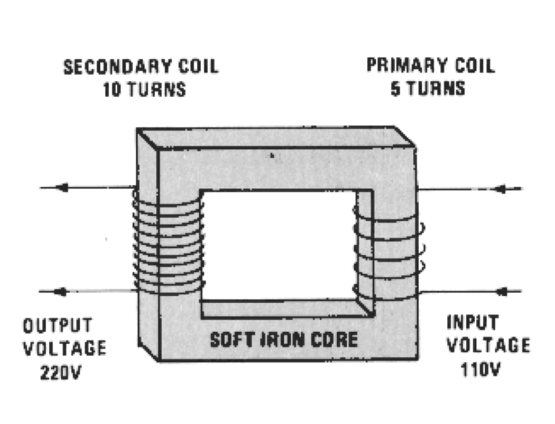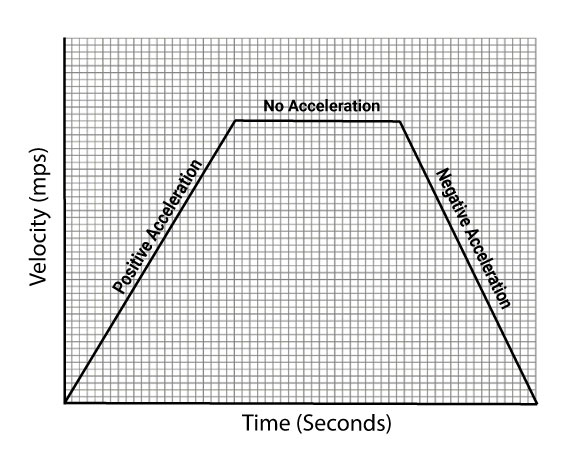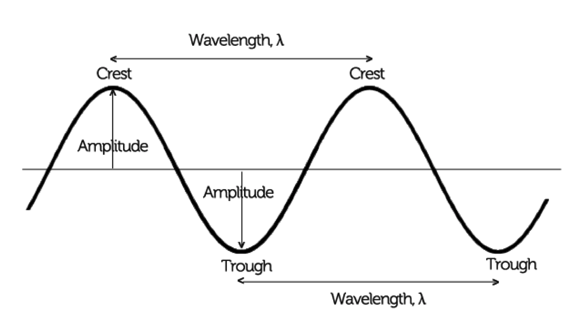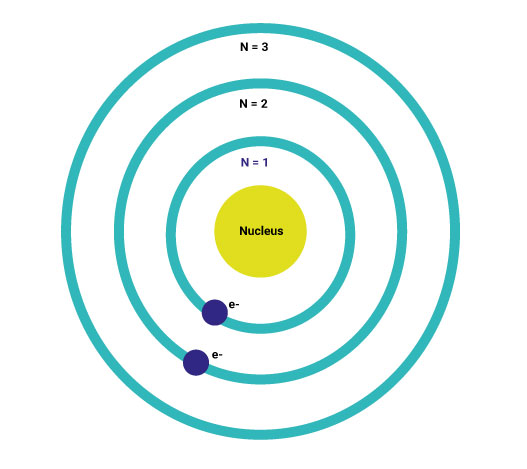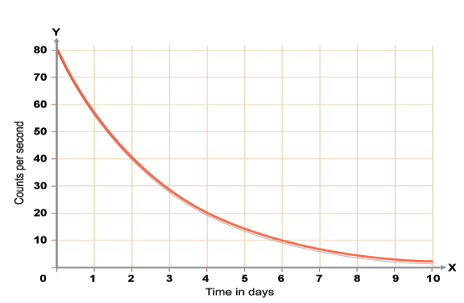ESAT Guides
ESAT Physics: What Do You Need To Know?
Written by: Matt Amalfitano-Stroud
Physics is one of the three sciences you’ll have to pick from when sitting the ESAT. Depending on your confidence with the subject, you can take on questions centred on physics and advanced physics, but what topics will these questions cover? Today, we’re going to look at the ESAT specification to see what you need to revise for Physics subtest within the ESAT
1/3
BASICS OF THE ESAT
This should hopefully be obvious to you by now, but we’ll quickly revise our knowledge of the ESAT to confirm everything we know so far.

What is the ESAT?
Most courses at the University of Cambridge require you to complete an admissions test, and the Engineering & Science Admissions Test (ESAT) is the test you’ll need to complete for various STEM courses there, including Natural Sciences, Engineering and Veterinary Medicine. The ESAT is also required at Imperial College London for applicants of Engineering and Physics courses.
The ESAT is a computer-based, multiple-choice examination that covers the three core sciences, Physics, Chemistry and Biology, alongside Mathematics (in both standard and advanced forms).
Split into five subtests, applicants will have to take three of these subtests during your ESAT sitting. The five subtests are as follows:
ESAT Subtests
- Mathematics 1
- Physics
- Chemistry
- Biology
- Mathematics 2
Of these subtests, Mathematics 1 must be completed by all applicants. Most applicants must then choose 2 additional subtests to complete. The exception to this is Cambridge Engineering applicants, who are required to complete Mathematics 1, Mathematics 2 and Physics, with no option to choose a subtest.
In each subtest, you’ll find 27 multiple-choice questions. You’ll have 40 minutes to complete each subtest, making the ESAT last 2 hours in total. Time cannot be carried over between subtests. This chart summaries what you should expect from the ESAT:
ESAT Format Chart
How is the ESAT Scored?
The ESAT is scored on a scale of 1 – 9. Each part is ranked separately on this scale, with the three scores then being combined into your final score. These scores are based on your raw marks in each subtest, with each question being worth 1 mark. There is no negative marking in the ESAT, meaning you don’t lose marks for incorrect answers. The conversions between raw marks and final scores are different between each part.
There is no way to pass or fail the ESAT as there isn’t a benchmark score that you need to hit to guarantee a spot at interviews. The admissions team will use your grade alongside your personal statement to make a judgement on whether you could be a good fit for the course.
More information about ESAT Results and Scoring is available in our dedicated ESAT Results Guide. If you want to take a deeper dive into the ESAT as a whole, you can find everything you need to know in our ESAT Definitive Guide!
Build your ESAT skills with Exams.Ninja!
With the ESAT.Ninja Preparation Platform, you’ll be able to use over 100 guides and over 1,200 practice questions to get yourself ready for every part of the ESAT. Start your preparation now by creating a free account!
2/3
ESAT PHYSICS SPECIFICATION
In the Physics subtest of the ESAT, you’ll be taking on standard-level physics questions based on a variety of topics that you should have covered during your education. Let’s take a look at everything you’re going to need to study for!
The Physics subtest in the ESAT is one of four options you can pick to complete in the test (after you’ve completed the Mathematics subtest of course). There will be 27 questions to answer based on all of the topics that you will find in the ESAT Specification. There are seven major topics to cover, so let’s take a brief look at them right now!
Exams.Ninja Tip
Before we get started, let’s remind ourselves of the essential SI prefixes, or Scientific Quantities and Units, which are essential to memorise for all subtests in the ESAT:
nano- 10–9
micro- 10–6
milli- 10–3
centi- 10–2
deci- 10–1
kilo- 103
mega- 106
giga- 109
Electricity
This is a topic you’ll likely have been studying since primary school! Our understanding of electricity has developed so much in such a short period of time (relative to other sciences), so it’s only natural that there will be a lot of revision to do!
At this level, the key thing to understand is electrical circuits. Here are some of the things you’ll need to keep in mind before entering the exam:
You’ll need to understand the basic layout of a circuit diagram, such as the ones you’ll see below. This also extends to the different symbols to represent components of a circuit, such as cells, resistors, switches and more.
Make sure you can definitely tell the difference between series and parallel circuits, as pictured below. The difference essentially comes down to if a circuit has more than one loop within.
There are several definitions to remember, including:
- Circuit – A flow of electricity
- Cells – A single energy source powered by chemical reactions.
- Current – A stream of charged particles travelling through a conductor.
- Resistor – A component to generates electrical resistance within a circuit.
- Voltage – The measure of difference of electrical energy between two parts of a circuit
There are also various other concepts that you’ll need to know, including direct currents, alternating currents, insulating materials and conductive materials.
There are also plenty of equations to memorise! Here are the key ones you’ll need for Part B, where Q = Charge, I = Current, V = Voltage, R = Resistance, P = Power and t = Time and E = Energy
I = Q/t
V = E/Q
Resistance: (V = IR) and (R = V/I)
P = E/t OR P = IV = I2R = V2/R
E = ItV
Also featured within the ESAT Specification is Electrostatics, or, Static Electricity. There’s not to much you’ll need to go through, just ensure that you understand how it relates to insulators and how its charges work, as well as the dangers surrounding it.
Magnetism
This one’s another primary school staple, although the ESAT goes far beyond putting N and S against each other to watch them attract!
It’s always best to start with the basics, such as the properties of standard magnets, including their poles and fields. You can get an idea of how a typical bar magnet’s fields look at different stages of attraction.
Diving into the more complex topics, you’ll need to revise the following:
Induced Magnetism
This is the process of giving magnetic properties to non-magnetic metals, such as steel alloys. It’s done by reorienting the particles of the material to line up the north and south ends of each within a magnetic field.
Electromagnetics
When you want to create a controllable magnetic field, then you’ll need to use electromagnetics. You’ll need to understand how this is achieved and factors that determine a magnet’s strength. Electromagnetic Induction is also covered in the specification, so you’ll need to brush up on how this works.
The Motor Effect
This essentially means that a wire carrying currents will produce a magnetic field. If the field interacts with another, a force will be created that pushes the wire towards a right angle. An equation you should memorise for this is F = BIL, where F = Force, B = Flux Density, I = Current and L = Length of Wire. Also, you will need to know how this relates to DC Motors.
Transformers
A transformer is a device that changes voltage and current, whilst keeping power the same. Thankfully, one equation will see you through the majority of questions regarding transformers.
N¹/N² = V¹/V²
N¹ is the number of turns on the primary coil and N² is the number of turns on the secondary coil, with the V values being their respective voltages.
Exams.Ninja Tip
One small piece of information that you will want to remember is that transformers only work with one kind of current, Alternating Currents (AC). They will not work with Direct Currents (DC). While unlikely, there’s always a chance that a question will try to catch you out with this information.
Mechanics
This is what comes to many people’s minds when they hear “Physics”. This topic is all about forces, energy, movement and the many ways of measuring and using them.
Let’s start with the basics of Scalars and Vectors:
Scalars – Quantities with a magnitude but no directions (e.g. time, speed, distance)
Vectors – Quantities with both a magnitude and direction (e.g. displacement, acceleration, velocity)
You’ll need to know how to apply the following equations to questions within the ESAT:
Speed = Distance/Time
Velocity = Change in Displacement/Time
Acceleration = Change in Velocity/Time
Average Speed = Total Distance/Total Time
v² – u² = 2as
That last one is known as the Equation of Motion, where u = initial velocity, v = final velocity, a = acceleration and s = displacement. You’re also going to need to understand how these equations are presented graphically, such as the example below of a Velocity Time Graph:
Forces and Extensions
Forces and Extensions is another major part of this topic. A force is, of course, defined as a push or pull on an object that causes a change in its velocity. Essentially, forces are responsible for changing the motion of objects with mass.
There are a bunch of different types of forces you’ll need to remember:
Weight – A force that acts due to gravity.
Normal Contact – The force of a stationary object exerted against a surface.
Drag – An aerodynamic force that opposes objects within the air.
Friction – A resistive force caused by two objects sliding against one another.
Magnetic – The forces generated by magnetic fields.
Thrust – A force acting perpendicular to a surface.
Lift – A force of raising or lowering.
Tension – A pulling force caused via a string or similar object.
With forces, you’ll also need to understand their extension. This is an object increasing in length, as opposed to compression, and goes hand in hand with the concept of elasticity (although inelastic extension is also possible once an object has reached its elastic limit, also known as inelastic deformation).
Here’s an example of a Force-Extension Graph:
Here’s a reminder of some of the Laws you will need to remember during your revision at this level:
Hooke's Law
Hooke’s law says that force is proportional to extension, based upon the idea of ‘String Constant’ which is the constant of proportionality. the relationship is summarised in this equation.
F = kx
F = Force applied to material/string (N)
x = Extension of material/spring (m)
k = Spring constant (Nm -1)
Newton's Laws
- A body will remain at rest or in a state of uniform motion in a straight line unless acted on by a resultant external force.
- Force applied is directly proportional to the rate of change of momentum in an object.
- If body A exerts a force on body B, then body B exerts an equal and opposite force of the same type on body A. This is “Reaction Force”.
Let’s take a quick look at the definitions of mass and weight:
Mass – A measure of how much matter an object is made up of.
Weight – the force of gravity on an object.
Gravity is defined as the force that attracts objects towards the earth. We can easily express weight as w = mg.
A Resultant Force is required for an object to accelerate. It is defined as the difference in forces when a system of forces is acting on an object.
Momentum (p) is simply defined as mass in motion. It can be expressed as:
p = mv
You’ll need to be sure you revise the concepts of conservation of momentum and changes in momentum.
Lastly, for Mechanics, you need a good understanding of energy for the ESAT. Energy relates to everything we’ve spoken about so far as any form of force or movement requires and generates energy. Here are a few formulae that you’re going to need to know:
Work as Energy (E): E = Fd
Power (P): P = E/t
Kinetic Energy (KE): KE = 1/2mv²
Remember that energy cannot be created or destroyed, so we use the concept of energy transference to determine things such as potential energy and energy efficiency. You can use this equation when working out energy efficiency:
Efficiency = Useful Energy Out/Total Energy In x 100
However, bear in mind that there is no such thing as a 100% efficient energy transfer.
Thermal Physics
As the name implies, this sector of physics is all about heat. The basic rule of this topic that you need to know is that heat will always move from a hot area to a colder area. The bigger the difference is in temperatures, the quicker the transfer will be. Let’s look at the three methods of transfer:
Conduction
Conduction is the transfer of heat or energy particles to a neighbouring object via vibrations. This needs to occur between two conductors typically, as an insulator will have the opposite effect on any energy or heat present.
Convection
This is the process of heating up higher energy particles in cooler areas and usually occurs within liquids and gas. These particles are transferred in what is called “Convection Currents”.
Electromagnetics
When you want to create a controllable magnetic field, then you’ll need to use electromagnetics. You’ll need to understand how this is achieved and factors that determine a magnet’s strength. Electromagnetic Induction is also covered in the specification, so you’ll need to brush up on how this works.
Radiation
In relation to Thermal Physics, radiation is a method of heat transfer that is caused by the emission of infra-red electromagnetic waves. One rule to consider here is that all objects emit and absorb radiation.
Now let’s take a look at Heat Capacity, otherwise known as Thermal Capacity. Heat Capacity is defined as the number of heat units required to raise the temperature of an object by one degree. Heat Capacity is measured in joule per kelvin and can be calculated using the following equation:
Specific Heat Capacity = thermal energy/(mass x temperature)
Matter
Matter is all about the structure of all objects in the universe determined by their atoms. As you should know at this stage, there are three stages of matter:
Solid: A body whose atoms are stuck in a rigid and consistent structure.
Liquid: A body whose atoms are free and have weaker forces of attraction to one another.
Gas: A body whose atoms are spaced out and completely unstructured.
All elements can transition between the three states, it’s simply about rearranging the atoms. Some objects are easier to change than others and will typically be caused by changes in temperature (e.g. melting a solid into a liquid via raised temperature, evaporating a liquid into a gas).
Ideal Gases
The Kinetic Theory of Gases is a simple model used to describe the behaviour of gases through the motion of tiny particles or atoms. This model can be used to describe an “Ideal Gas”, which is a hypothetical gas which has no form of interaction and occupies no space, essentially meaning it perfectly follows the laws of gas.
The equation for Ideal Gases is as follows:
PV = nRT
Here, P = Pressure in Pascals, V = Volume (m3), n = Number of Moles Gases, R = Ideal Gas Constant, T = Absolute Temperature
Lastly, let’s take a look at Density and Pressure.
Density is defined as the measure of how compact a substance is and is expressed via Density = Mass/Volume.
Pressure is expressed as P = F/A, meaning it is equal to the normal force divided by area.
Waves
Waves in physics are defined as propagating, dynamic disturbances of one of more quantities, sometimes taking place in a periodic fashion. These can cover a lot of different topics in reality, as waves are measured in many fields of science. Here’s a very simple diagram of a wave with all of its features labelled.
The key things to understand here are:
Amplitude – The height of the wave from its resting position to its peak.
Wavelength – The physical length of the wave, measured between two similar points at adjacent waves (e.g. peak to peak).
Frequency – This is defined as the number of complete waves per second and is measured in Hertz (Hz).
These are the key equations you will need for the ESAT:
Frequency = 1/Period
Wave Speed = frequency x wavelength OR Wave Speed = Distance/Time
We can characterise waves by their type, either Transverse or Longitudinal:
Transverse – Waves that travel in a direction perpendicular to the direction of oscillation.
Longitudinal – Waves whose particles oscillate parallel to the direction of the travel.
There are various wave behaviours you are going to need to understand, which you’ll find below:
Reflection
Where a wave bounces off a surface. The angle that the wave hits is known as the angle of incidence, which will cause it to reflect at the angle of reflection.
Refraction
This usually relates to light, but in waves, it relates to the angles and direction a wave will travel when it enters a different medium.
Diffraction
This relates to how waves can bend around corners in certain conditions. It is most likely to occur when a wavelength is similar to the size of the gap it’s passing through.
Some other important topics to cover include drawing ray diagrams in relation to optics, understanding the properties of sound waves (and their variations) and understanding the properties and uses of electromagnetic waves.
Radiation
This is the last topic you’re going to need to prepare for in the Physics subtest of the ESAT. Let’s take a look at some of the key areas you’ll need to revise:
Atomic Structure
This is an area that has been highly debated throughout history, with a variety of models being produced over the years. There are a variety of things you’ll need to consider here, including Subatomic Particles (particles that make up atoms), and the Nuclear Model, specifically the Bohr model. The key take away from this model (which you’ll find below) is that protons and neutrons can be found in a dense, positively charged nucleus, while electrons are found in orbitals or energy levels around the nucleus.
Ionisation – The process in which an electron is given enough energy to break away from an atom, with the end result of two charged ions or particles.
Ionising Radiation
There are three forms of radiation. Let’s take a look at each one:
Alpha Particles
Alpha Particles are Helium nuclei (2 protons and 2 neutrons), which have the smallest range of the three radiation types but are the most ionising form of radiation. They can however be blocked by practically any surface.
Beta Particles
These are high-speed electrons with a mass of 0 and a charge of -1. They have a medium-range, medium ionising power and are harder to block, with aluminium being the most effective material.
Gamma Rays
Gamma Rays are photons with a mass and charge of 0. They have the longest range but are the least ionising and can be blocked by materials with a high atomic number, such as lead.
Be sure to remember the different properties of each radiation type, as they will come into play within the ESAT questions.
Radioactive Decay
Let’s take a look at the equations of decay each form of decay:
Alpha Decay – nzX = – n – 4 z – 2 Y +4 2 α
Beta Decay – nzX = n z + 1 Y + 0 -1 β
Gamma Decay – There isn’t really an equation for this, as the nucleus just changes from a high energy state to a low energy state, releasing the gamma photo in the process.
Half-Life
Half-Life is defined as the average time it takes for the number of nuclei in a radioactive sample to halve. Questions in the ESAT about this will likely ask you to work out the half-life of a radioactive sample. These should be presented in the form of an exponential decay graph.
In this example, a good place to start is at Time = 0. We can see that the counts per minute (a measure of radioactivity) is 80, so all we have to do is see how long it takes for that number to halve to find the half-life. We’re looking at the amount of time it takes for the curve to fall to 40 counts per minute, and the answer is 2 days. So the half-life is 2 days.
Be wary of the concept of Background Radiation while answering questions like this. Background Radiation is defined as the remaining uniform microwave radiation left behind from the creation of the universe.
That covers all the general concepts you can expect to find within the Physics subtest of the ESAT. There are further details that haven’t been mentioned here, so please make sure you read the official specification in full to ensure you’re fully aware of everything that could be included in the test.
Want to learn even more about ESAT Physics?
The ESAT.Ninja Preparation Platform contains over 100 expertly written tutorials that teach you everything you need to know about ESAT mathematics and science, as well as plenty of super revision and exam tips!
3/3
ESAT PHYSICS PRACTICE QUESTIONS
With all the necessary knowledge now in mind, let’s try some ESAT practice questions to get a proper idea of how you will need to use it in the exam.
ESAT Physics Question 1
An elevator has a mass of 1,600 kg and is carrying passengers that have a combined mass of 200 kg. A constant frictional force of 4,000 N retards its motion upward. What force must the motor provide for the elevator to move with an upward acceleration of 1 ms-2?
Assume: g = 10 ms-2
A) 1,190 N
B) 11,900 N
C) 18,000 N
D) 22,000 N
E) 23,800 N
The correct answer is E.
Weight of elevator + people = mg = 10 x (1600 + 200) = 18,000 N
Applying Newton’s second law of motion on the car gives:
Thus, the resultant force is given by:
FM = Motor Force – [Frictional Force + Weight]
FM = M – 4,000 – 18,000
Use Newton’s second law to give: FM = M – 22,000 N = ma
Thus, M – 22,000 N = 1,800a
Since the lift must accelerate at 1ms-2: M = 1,800 kg x 1 ms-2 + 22,000 N
M = 23,800 N
ESAT Physics Question 2
A 20 A current passes through a circuit with resistance of 10 Ω. The circuit is connected to a transformer that contains a primary coil with 5 turns and a secondary coil with 10 turns. Calculate the potential difference exiting the transformer.
A) 100 V
B) 200 V
C) 400 V
D) 500 V
E) 2,000 V
F) 4,000 V
G) 5,000 V
The correct answer is C.
Using Ohm’s Law: The potential difference entering the transformer (V1) = 10 x 20 = 200 V.
Now use N1/N2 = V1/V2 to give 5/10 = 20/V2.
Thus, V2 = 2,000/5 = 400 V
ESAT Physics Question 3
The half-life of Carbon-14 is 5,730 years. A bone is found that contains 6.25% of the amount of C14 that would be found in a modern one. How old is the bone?
A) 11,460 years
B) 17,190 years
C) 22,920 years
D) 28,650 years
E) 34,380 years
F) 40,110 years
The correct answer is C.
The percentage of C14 in the bone halves every 5,730 years. Since it has decreased from 100% to 6.25%, it has undergone 4 half-lives. Thus, the bone is 4 x 5,730 years old = 22,920 years
ESAT Physics Question 4
Which of the following statements are correct?
- Electromagnetic induction occurs when a wire moves relative to a magnet.
- Electromagnetic induction occurs when a magnetic field changes.
- An electrical current is generated when a coil rotates in a magnetic field.
A) Only 1
B) Only 2
C) Only 3
D) 1 and 2
E) 2 and 3
F) 1 and 3
G) 1, 2 and 3
The correct answer is G.
Electromagnetic induction is defined by statements 1 and 2. An electrical current is generated when a coil moves in a magnetic field.
This has been a fairly in-depth look into the required physics knowledge that you’ll be expected to know when you sit the ESAT. However, this is only scratching the surface of your preparation. You know the required concepts but now it’s time to fully begin your revision! If you’re looking for a completely in-depth collection of tutorials that cover every aspect of the exam (over 100 in fact), then ESAT.Ninja is exactly what you’re looking for! You can even try it out for free and get a head start on your preparation, so sign up today to boost your ESAT score!
Not sure which subtests you’ll take on? You can revise all of them with ESAT.Ninja!
ESAT.Ninja contains everything you’ll need to revise for every part of the ESAT. All of this can be found within our three amazing components!
Training Temple- exclusive tips, amazing revision notes and over 100 expert tutorials to guide you every through everything you’ll need to revise.
Practice Dojo- take on over 1,200 practice questions that cover every part of the assessment. Each one provides fully worked solutions to leave no questions unanswered!
Exam Arena- Attempt our collection of ESAT mock tests and NSAA & ENGAA Past Papers in a simulated exam scenario. You’ll get an accurate score and as many attempts as you need to succeed!
Start your ESAT preparation today and become an ESAT Master!

